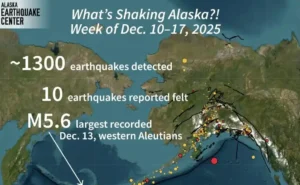Officials confirmed that significant job cuts under the Trump administration have drastically reduced NOAA’s scientific capacity, putting Alaska seafood harvests at risk. Since January, NOAA Fisheries’ Alaska regional office has lost 28 employees, nearly a quarter of its staff, director Jon Kurland told a recent council meeting.
Kurland explained that the cuts severely impact NOAA’s ability to manage fisheries sustainably, affecting permitting, data analysis, and quota oversight. He noted that their IT systems, crucial for tracking real-time seafood catches, now operate with less than a skeleton crew.
Director Robert Foy said that NOAA’s Alaska Fisheries Science Center, which supports research across Juneau and Kodiak, lost 51 staff. These losses have crippled operations by up to 30%, delaying essential fish surveys and canceling critical research at Little Port Walter.
Foy told the North Pacific Fishery Management Council that vital projects, including demographic research on Chinook salmon, are suspended. This science helps fulfill U.S.-Canada Pacific Salmon Treaty obligations and supports long-term fish stock management.
Meanwhile, President Trump’s executive order in April encouraged more aggressive harvesting by easing fishing regulations. The order, aimed at “Restoring American Seafood Competitiveness,” conflicts with the reduced ability to collect reliable stock data.
NOAA official Sam Rauch acknowledged the contradiction, admitting that pushing higher harvests while reducing scientific resources increases long-term sustainability risks. He emphasized the need for cheaper, modern survey methods as agency budgets shrink.
Despite the uncertainty, Foy confirmed that fish surveys for 2025 in the Gulf of Alaska and Bering Sea will proceed. However, data analysis will slow down due to a lack of experienced personnel, increasing the likelihood of errors or delays.
Council member Nicole Kimball highlighted the danger of approving larger catches without strong scientific backing. She stressed that reduced data must lead to more cautious management, not aggressive quotas.












